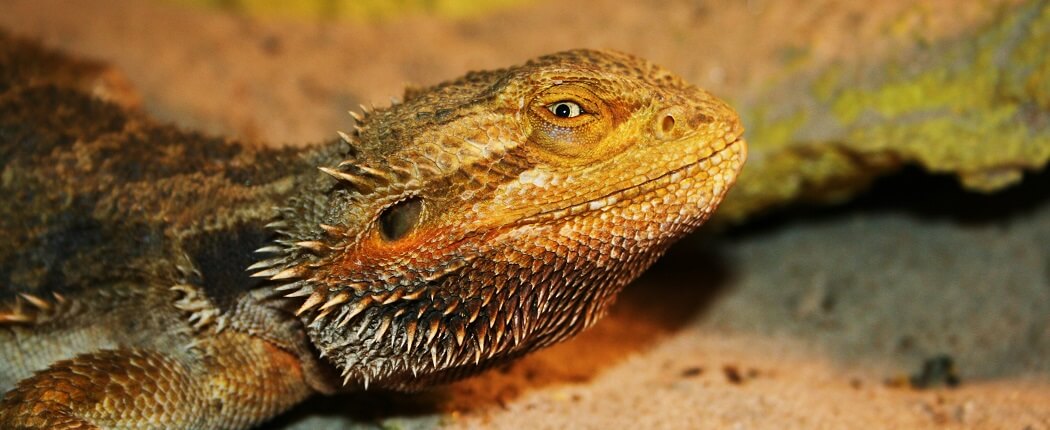A Beginner's Guide to Keeping Reptiles
This article is written by one of our veterinarians,
Keeping reptiles can be extremely rewarding and enjoyable, they make excellent pets and are a great option for people with limited space. If you are looking for a pet that's a little different, a reptile could be the perfect choice for you.
In Australia, most reptile species require a permit to be kept as a pet. The requirements can vary depending on where you live, so for more information check with your local state or territory government.
Once you've got a permit, before you rush out and buy a reptile, it's important to have a basic understanding of their unique care requirements. Incorrect housing and husbandry practices are a common cause of health problems in reptiles, so if you are thinking of adding a lizard, snake or turtle to your family, read on to make sure you avoid some of the most common pitfalls.
Choosing an Enclosure

As a general rule, bigger is better when it comes to choosing an enclosure for your reptile. Look for a well ventilated enclosure which will allow your particular reptile species to move around in the way it would in its natural environment. For example, ground dwelling lizards will prefer a long and low shaped enclosure, whereas tree dwelling snakes may prefer a taller enclosure which allows them to climb. Whatever kind of enclosure you choose for your reptile, it must be easy to clean and disinfect regularly to prevent disease.
Enrich your reptile's environment within the enclosure by adding furnishings including branches, rocks, places to hide and a substrate for the floor. Placing a water dish at the cooler end of your reptile's enclosure is essential to provide some humidity and allow for natural behaviours such as swimming or immersion in water. Depending on the preference of the species you are keeping, the humidity level can be altered by increasing or decreasing the size of the water dish.
Some popular choices for substrates in reptile enclosures include reptile sand, wood fibre and bark, newspaper, crushed walnut shell and natural or recycled paper cat litter pellets. Whatever option you choose, make sure that it is easy to clean and disinfect and also ensure that your reptile doesn't develop a taste for eating the substrate, as this can result in digestive obstructions. Avoid feeding reptiles on sand, as this can also cause obstructions if sand is inadvertently eaten along with food.
Heating

Shop All Reptile Heat and Lighting
As a cold-blooded creature, your reptile is entirely reliant on external heat sources to maintain his body heat. Being too hot or too cold can impact many aspects of your reptile's health, including digestion, immunity and reproductive function.
All reptiles need to be provided with a heat source, but it is not as simple as just putting a heat lamp in the enclosure and walking away. Reptiles are found in many different climates around the world, which means each kind of reptile has a unique optimal body temperature, which can vary greatly from species to species.
When heating your reptile's enclosure, aim to provide a thermal gradient where the hot end of the enclosure is about 2 to 3°C above their preferred body temperature, and the cold end is about 2 to 3°C below their preferred body temperature. Monitor the temperature at both ends of your reptile's enclosure with thermometers and use a heat source that is controlled by a thermostat, with the probe placed in the hottest part of the enclosure.
A heat lamp that emits either infra-red or visible light is generally considered to be the best types of heat source when housing reptiles, but make sure it is enclosed to prevent burns, particularly for snakes. If you are using an infra-red bulb for heating, you'll need to provide supplementary light for your reptile during the day. On the other hand, if you are using a visible light bulb for heat, you will need an alternative heat source for use at night as constant light will disturb your reptile's natural day and night rhythm. Use heat rocks with caution as incorrect use can result in burns.
Lighting

Reptiles need exposure to UV light to metabolise calcium which would be provided in the natural environment by basking in unfiltered sunlight. Glass and perspex filter out some of the UV rays that your reptile needs, so if they are not able to bask in unfiltered sunlight, you will need to provide your reptile with UV light from a lamp. Aim to give your reptile 12 to 14 hours of UV light during summer, and 9 to 12 hours during winter. UV bulbs should be replaced every 6 to 9 months.
Signs of disease in reptiles are often subtle and can happen very slowly over time, so it is important to be vigilant and seek help from a veterinarian if you notice anything abnormal in your reptile's appearance or behaviour. Although it might seem complicated at first, taking the time to understand your reptile's unique needs for housing and care will help them to live a long and healthy life.
Other Popular Reptile Care Products
- Urs Reptile Tweezers
- Exo Terra Reptile Basking Lamp
- Exo Terra Desert Den Fauna Box
- Vetafarm Ectotherm Lizard Food
Want to know more? Check out our Discover Page for more tips on keeping your pets happy and healthy.



























